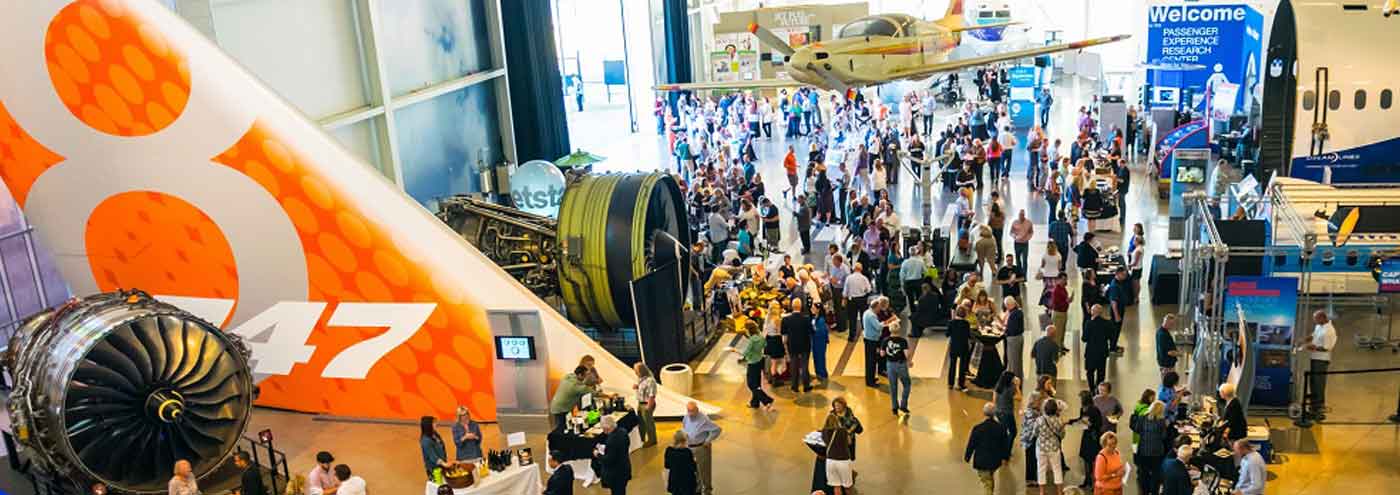Snohomish County’s Place in the Global Supply Chain
23 Aug 2021
Washington is one of the most trade dependent states in the country. According to U.S. Customs data, in 2017, more than $77.0 billion in merchandise and commodities originating in Washington were exported to overseas markets. Supporting these exports were an estimated 94,000 workers employed wholly or primarily in the global trade sector and supply chain management, such as those working in air and marine cargo handling, logistics, trucking, and transloading. There are also many other workers employed in manufacturing, retail, and various other sectors of the economy directly engaged in these activities. Examples include procurement and logistics in aerospace, e-commerce, and commodity producer industries such as agriculture. Total business revenues in this sector reached $11.4 billion in 2017, a 38% growth since 2009 (real, inflation-adjusted dollars).[1]
In 2017, Snohomish county had approximately 3,200 jobs across the global trade and supply management sector. Snohomish is the second largest exporting county by value of exports. Much of this comes from aerospace exports, but Snohomish county is home to many other high value industries, such as computer and electronic product manufacturing, machinery, agriculture and food products, and fabricated metal products. Snohomish county is well integrated into the complex, multi-modal supply chain that connects manufacturers with inputs and consumers with goods.
Transportation infrastructure is a critical factor. For example, Snohomish county’s aerospace industry is connected to the world in part by the Port of Everett, with transports all the oversized parts for Boeing’s 747, 767, 777, K-C46 and 777X. Besides aerospace, the Port of Everett also handles bulk goods, including logs. It is one of eight deep-draft public ports in the Salish Sea that can handle ocean-going vessels. Currently, ports across Washington are making capital investments to stay competitive in a global market. This means being able to handle bigger ships and move more containers and at a faster rate as the global shipping industry moves towards larger and larger vessels.
The Port of Everett is in the middle of a $313 million seaport modernization plan to be completed in 2022.[2] The plan includes an additional 300 feet of capacity, strengthening the South Terminal wharf, installing two large gantry cranes, dredging and other improvements. These changes will ensure Everett’s place as a modern, world class port. Before these improvements, the Port of Everett could accommodate ships up to about 700 feet in length. After modernization, it will be able to handle Panamax and Post Panamax class ships as long as 1,000 feet in length and 39 feet in draft. Naval Station Everett is another important port facility in the Puget Sound that moves cargo and personnel.
On land, Snohomish county is integrated into the densest network of surface transportation in the state. I-90, via I-5 and I-405, and Highway 2 carry freight by truck to and from the county, linking businesses to the sea and airports in Seattle and Tacoma. Rail networks are also central to the supply chain. Burlington Northern Santa Fe (BNSF), the largest rail operator in the state, has a railyard in Everett and connects the area via its mainline to the Midwestern U.S. Rail improvements are also included in the Port of Everett’s modernization plan.
Another link in Snohomish county’s supply chain infrastructure is Paine Field, long an important center of the aerospace industry. The airport is set to begin passenger flights as early as March 2019. After being delayed by the federal government shutdown, Alaska Airlines and United Airlines will start flying customers domestically.[3] This will significantly reduce travel times for passengers that would otherwise use Sea-Tac airport and be a valuable asset in attracting talent and business to the county.
[1] Center of Excellence in Global Trade & Supply Chain Management, “Global Trade & Supply Chain Management Sector,” February 2019.
[2] Port of Everett, http://www.portofeverett.com/your-port/1-seaport-modernization.
[3] Janice Podasada, HeraldNet, https://www.heraldnet.com/business/passengers-and-workers-await-first-paine-field-boarding-call/.
More Topics


Legislature adjourns in a final hour
Aug 23 2021
